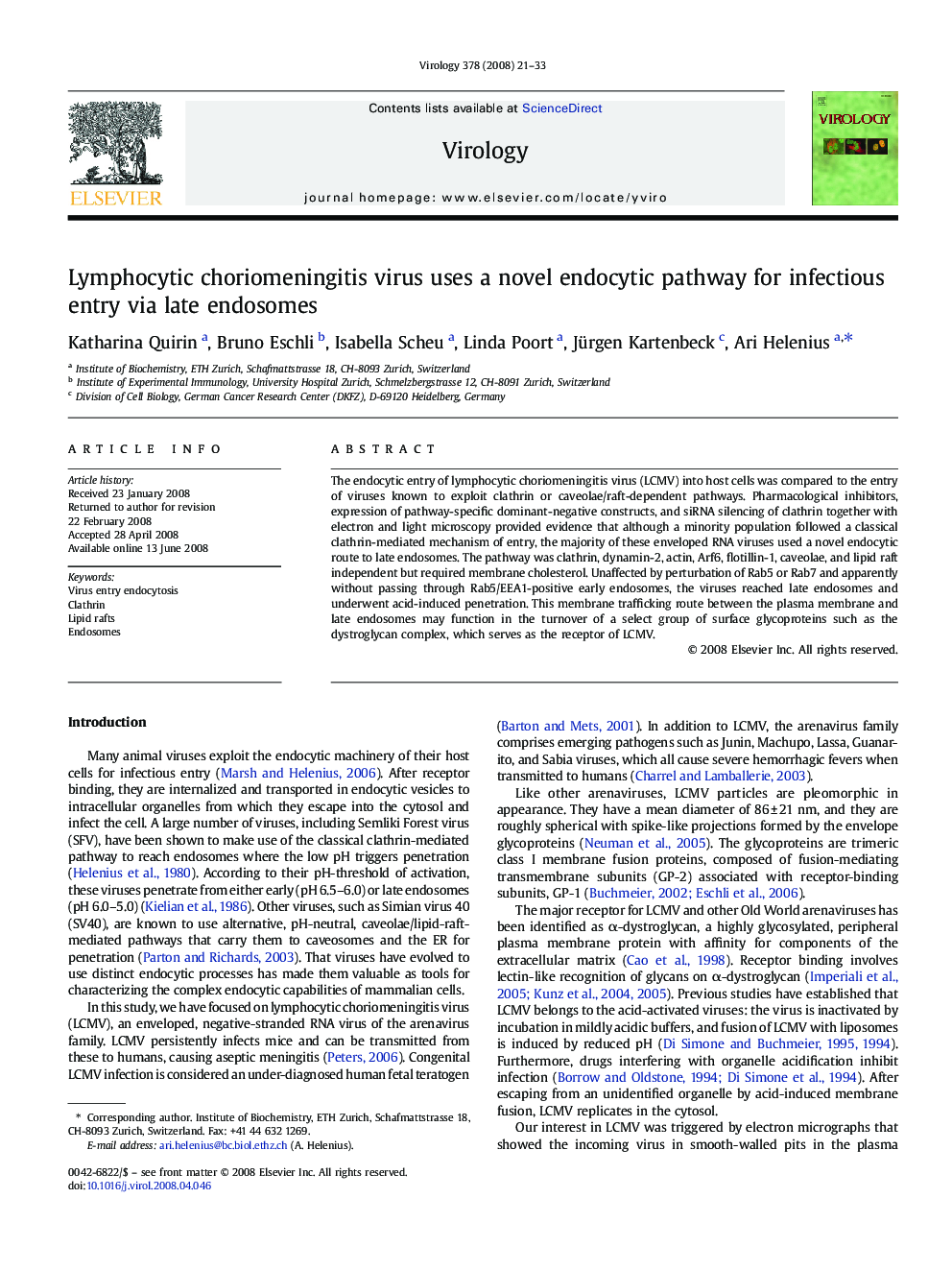| Article ID | Journal | Published Year | Pages | File Type |
|---|---|---|---|---|
| 3425799 | Virology | 2008 | 13 Pages |
The endocytic entry of lymphocytic choriomeningitis virus (LCMV) into host cells was compared to the entry of viruses known to exploit clathrin or caveolae/raft-dependent pathways. Pharmacological inhibitors, expression of pathway-specific dominant-negative constructs, and siRNA silencing of clathrin together with electron and light microscopy provided evidence that although a minority population followed a classical clathrin-mediated mechanism of entry, the majority of these enveloped RNA viruses used a novel endocytic route to late endosomes. The pathway was clathrin, dynamin-2, actin, Arf6, flotillin-1, caveolae, and lipid raft independent but required membrane cholesterol. Unaffected by perturbation of Rab5 or Rab7 and apparently without passing through Rab5/EEA1-positive early endosomes, the viruses reached late endosomes and underwent acid-induced penetration. This membrane trafficking route between the plasma membrane and late endosomes may function in the turnover of a select group of surface glycoproteins such as the dystroglycan complex, which serves as the receptor of LCMV.
